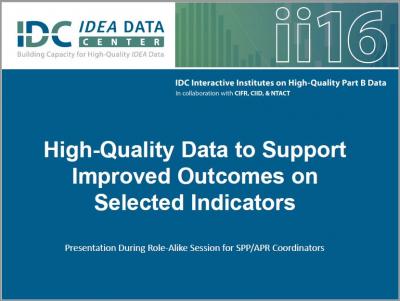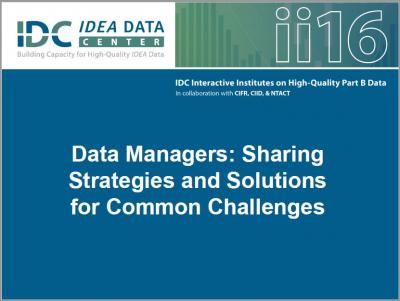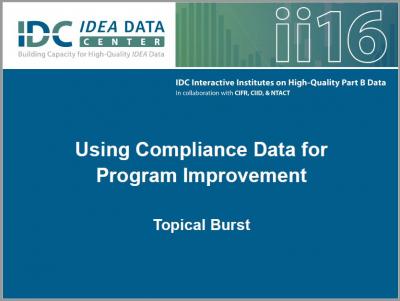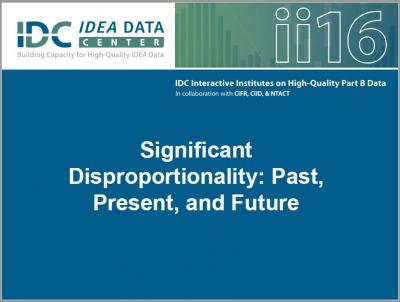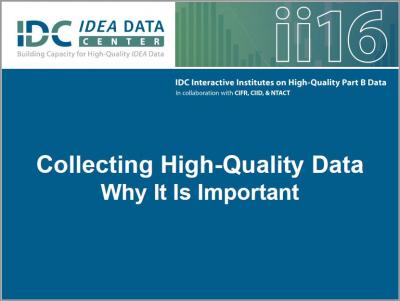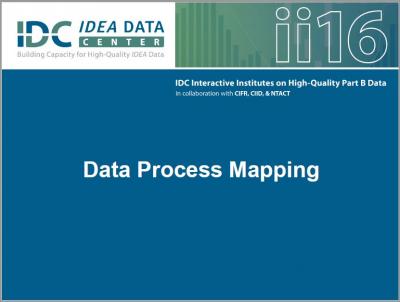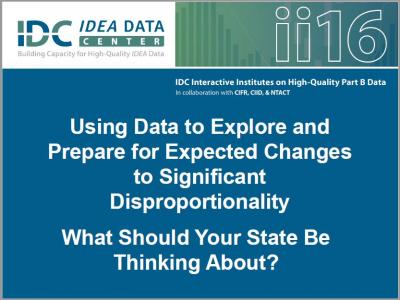Site Search
Results 8 - 14 of 25
Format: Presentations
High-Quality Data to Support Improved Outcomes on Selected IndicatorsThis interactive role-alike presentation for SPP/APR Coordinators engaged states in discussion and dialogue around their experiences with select APR Indicators that address student outcomes. The session included one state's experiences with capturing and using high-quality data and how the data are used to inform the APR and drive decisions for selecting and implementing strategies to improve student outcomes. Participants were encouraged to share their state's examples to improve the APR and student outcomes.
Format: Presentations
Data Managers: Sharing Strategies and Solutions for Common ChallengesThis role-alike presentation was a facilitated discussion by Part B Data Managers to explore strategies and solutions for meeting common challenges, such as working with LEAs to improve data quality, cross walking EDFacts data to SPP/APR indicators, and verifying that requirements for making data available to the public are fully met.
Format: Presentations
Using Compliance Data for Program ImprovementIt can be challenging to bridge the huge shift from a focus on solely compliance-driven data to an emphasis on results-driven monitoring. Compliance data can be hard and fast; results-driven data can be harder to pin down. This topical burst provided an overview of compliance data, the interrelationship between compliance and results data, and existing processes that can help bridge the gap between accountability and program improvement.
Format: Presentations
Significant Disproportionality: Past, Present, and FutureWith the U.S. Department of Education’s recent publication of an NPRM on Significant Disproportionality, questions abounded regarding what such a rule would mean for states and districts. This session began with a brief history of the statutes and regulations related to significant disproportionality. The majority of the session focused on the similarities and differences between the current regulation and the proposed rule and what effects these may have on states.
Format: Presentations
Collecting High-Quality Data: Why It Is ImportantThis presentation focused on what is meant by the term “data quality” and provided information regarding the importance of high-quality data in the collection, reporting, and use of data in local and state decision making. Presenters shared actual examples from state experiences.
Format: Presentations
Data Process MappingDo you ever wonder what other states are doing to ensure high-quality data? Participants of this session learned about the work that the Kentucky Department of Education is undertaking to create data process protocols, build capacity of data stewards, and institute a culture of high-quality data. This work is being accomplished using the new IDC Data Processes Toolkit. Presenters provided an overview of the toolkit, and participants had an opportunity to experience “preparing for this work.”
Format: Presentations
Using Data to Explore and Prepare for Expected Changes to Significant Disproportionality: What Should Your State Be Thinking About?To address the disparities experienced by minority students with disabilities, the U.S. Department of Education is proposing a new Equity in IDEA Rule. During this session, presenters used data examples to guide states through a series of questions regarding how the Notice of Proposed Rule Making might affect significant disproportionality calculations, analysis, and decision-making. Presenters also introduced IDC’s Success Gaps Toolbox, which can help states and local school districts in determining root causes of significant disproportionality.


